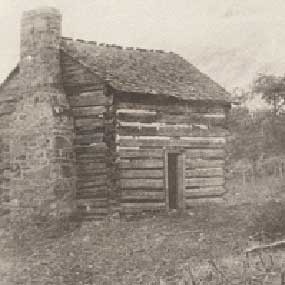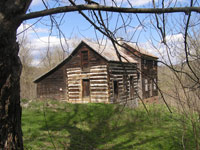William Ingles facts for kids
Quick facts for kids
William Ingles
|
|
|---|---|
| Born | 1729 Dublin, Ireland |
| Died | 1782 (aged 52–53) Ingles Ferry |
| Years of service | 1756, 1763-1782 |
| Rank | Colonel |
| Unit | |
| Battles/wars | Sandy Creek Expedition, Battle of Point Pleasant |
William Ingles (born 1729, died 1782) was an important colonist and soldier in early Virginia. His name was sometimes spelled Inglis, Ingliss, Engels, or English. He took part in the Sandy Creek Expedition and signed the Fincastle Resolutions. He rose to the rank of colonel in the Virginia Regiment. His wife, Mary Draper Ingles, was captured by Shawnee warriors. She was held for months before escaping and walking hundreds of miles back home. William Ingles also started Ingles Ferry in southwestern Virginia.
Contents
Early Life and Family
William Ingles was born in Dublin, Ireland in 1729. His father, Thomas Inglis, was a rich merchant. Thomas owned a large business and traded with his own ships. William had two brothers, Matthew and John. John was killed by Native Americans in 1756. Matthew became a sailor and died at sea.
In 1744, William and his family moved across the Atlantic Ocean. They settled in Augusta County, Virginia. William helped build roads in the area. In 1749, he went to Burke's Garden to build a house with his uncle, John Ingles.
The Draper's Meadow Attack
William Ingles helped start the settlement of Draper's Meadow in 1748. This area is now Blacksburg, Virginia. The Ingles and Draper families, along with Colonel James Patton, built the settlement. In 1750, when William was just 21, he built and ran Ingles Mill. This was one of the first mills in western Virginia.
William married Mary Draper in 1750. Their two sons, Thomas and George, were born in 1751 and 1753. In 1754, William bought 255 acres of land.
On July 30, 1755, Shawnee warriors attacked Draper's Meadow. This event is known as the Draper's Meadow massacre. They killed several people, including Eleanor Draper and Colonel James Patton. Mary Ingles and her two sons were captured. Betty Draper and a neighbor, Henry Leonard, were also taken. William Ingles and John Draper were harvesting wheat. They saw smoke from the burning cabins but arrived too late. William was chased by the warriors. He fell in the forest, and they ran past him without seeing him.
The Sandy Creek Expedition
William and John Ingles went to Williamsburg to ask the government for help. They wanted an attack on Shawnee villages in southern Ohio. They believed Mary was held there. They returned home unsuccessful. Then they learned Mary had escaped and walked hundreds of miles back!
William Ingles went back to Williamsburg. He wanted Governor Robert Dinwiddie to attack the Shawnee. Governor Dinwiddie and Colonel George Washington used Mary's information. They planned an attack on Lower Shawneetown. Mary had been held captive there for about two weeks. They hoped this would stop future attacks on English settlements.
In February 1756, William Ingles joined a group of 220 militia and 130 Cherokee warriors. He was a lieutenant on the Sandy Creek Expedition. Their goal was to attack Lower Shawneetown in Ohio. But on March 13, they had to turn back. Bad weather and a lack of food stopped them. The expedition failed, but it gave William valuable military experience. This helped start his career as a soldier.
Attack on Fort Vause
In June 1756, William and Mary left Draper's Meadow. They moved to Fort Vause. But Mary felt unsafe there. She convinced William to move again. They went to a fort near the Peaks of Otter. This is close to modern-day Montvale, Virginia.
On June 25, the same day they left Fort Vause, French soldiers and Shawnee warriors attacked the fort. They were led by François-Marie Picoté de Belestre. William's younger brother John was killed. John's wife, Mary, was captured. William's younger brother Matthew was wounded and taken prisoner. He was later released or escaped.
Rescuing Thomas Ingles
William and Mary made a new home in Bedford County, Virginia. They had four more children: Mary, Susanna, Rhoda, and John. They sold their land at Draper's Meadow to William Preston.
William made several trips to Ohio. He tried to get his sons George and Thomas back. They were still held by the Shawnee. He learned that George had died. But William was able to pay a ransom for Thomas. He brought Thomas back to Bedford County. However, Thomas ran away and returned to his Shawnee family.
Finally, in 1768, Thomas returned to Virginia. He was 17 years old. He had lived with the Shawnee for thirteen years. He spoke only Shawnee. William sent him to Dr. Thomas Walker at Castle Hill, Virginia. There, Thomas learned English and about his birth culture. Thomas Ingles later served as a lieutenant. He fought under Colonel William Christian in Lord Dunmore's War (1773-1774) against the Shawnee.
In 1775, Thomas married Eleanore Grills. They settled in Burke's Garden, Virginia. In 1782, Native Americans kidnapped his wife and three children. Thomas went to rescue them. During the fight, his two older children were killed. Eleanore was injured but survived. Thomas rescued her and their youngest daughter.
Ingles Ferry
As early as 1760, William Ingles earned money by ferrying troops across the New River. This was during the Anglo-Cherokee War. In 1762, he officially started Ingles Ferry. In 1766, he asked for a license to run a tavern there. The Ingles Ferry Hill Tavern and a blacksmith shop were finished in 1772. They were on the Pulaski County side of the river.
Ingles was in charge of keeping the road to and from Ingles Ferry in good condition. This road was known as Ingle's Ferry Road or English Ferry Road. It later became a major route. It was part of the Great Wagon Road, the Philadelphia Road, and the Wilderness Road. By 1780, William Ingles owned a lot of land and cattle. He also owned ten enslaved people. They helped run his ferry, worked in his mills, or did household tasks.

On May 8, 1779, Lord Henry Hamilton was a British prisoner of war. He was being taken to Williamsburg. He spent the night at William and Mary Ingles' home. Hamilton wrote in his journal about their home:
- 8th. In the Evening crossed over in a ferry the new river or great Canhawa, and were kindly and hospitably received at the house of Colonel Ingles-- here we rested for an entire day...The Scenery about this house was romantic to a degree, the river very beautyfull, the hills well wooded, the low grounds well improved & well stocked, I thought...Mrs. Ingles had in her early years been carryed off with another young Woman by the Savages...however terror and distress had left so deep an impression on her mind that she appear'd absorbed in a deep melancholy, and left the management of household concerns, & the reception of Strangers to her lovely daughter.
After William Ingles died in 1782, his son Thomas Ingles took over the ferry.
Military Career
Ingles served in the Virginia Militia. He led a group of Virginia Rangers in 1763. In September, he told his commander, William Preston, about a fight with Native Americans. He said his soldiers "all behaved like good soldiers." Several Native Americans were killed, and the colonists captured thirty horses. Ingles sent Preston a shot pouch taken from one of the Native Americans. He called it a "small trophee of our Victory." Ingles asked to keep serving on the frontier. He wanted to protect settlers in Augusta and Halifax counties.
On October 10, 1774, Ingles and his son Thomas fought in the Battle of Point Pleasant. William was a major and a commissary (someone who supplies food and equipment). He served under Colonel William Fleming. Thomas was a lieutenant under Colonel William Christian. On October 6, William Ingles was setting up camp. He joked to Preston that they had not seen any enemies. He wrote, "we encamped on the forks of the river and looked on our Selves in Safe Possession of a fine Encampment and thought our Selves a terror to all the Indian Tribes on the Ohio and thus Luld in safety."
On the battlefield, Ingles admired the bravery of the Native Americans. He said they "disputed the Ground with the Greatest Obstinancy, often Runing up to the Very Muzels of our Guns." He remembered seeing "many a brave fellow Waltirring in his Gore." In 1777, he became a colonel of the militia in Montgomery County, Virginia.
Fincastle Resolutions
On January 20, 1775, William Ingles was one of 15 people to sign the Fincastle Resolutions. This was a message to Virginia's representatives at the First Continental Congress. It showed support for the Congress's efforts to resist the Intolerable Acts. These acts were laws passed by the British Parliament in 1774.

Later Life and Death
William Ingles tried for many years to officially own his lands. These lands were along the New River, the Holston River, and the Bluestone River. He finally got ownership rights shortly before he died in 1782.
In 1780, William Ingles was accused of being a leader in a plot by people loyal to Britain. He was not found guilty, but he was ordered to pay a very large sum of money as a bond. Soon after this, he left the military, saying he was too sick to serve.
William Ingles died in 1782 at age 53. He left some of his land to his daughters, Rhoda and Susanna. He also left land to Susanna's husband, Abraham Trigg, and Abraham's brother Daniel Trigg. Another part went to Colonel William Christian, who managed Ingles' estate. Ingles is buried in the Westview Cemetery in Radford, Virginia.
Memorials
Ingles Ferry was added to the National Register of Historic Places in 1969. The Ingles Bottom Archeological Sites were added in 1978. You can see rebuilt versions of the Ingles Ferry Tavern and the Ingles home at the Ingles Ferry historic site in Pulaski County, Virginia. There is also a stable and a family cemetery there.


